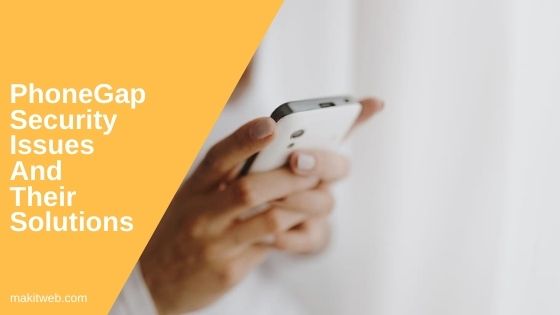There’s a lot to love about PhoneGap, from its easy-to-use interface to its huge library of app resources. However, it does have its flaws. One of its biggest ones actually being its end products’ security.
Here are some of the PhoneGap apps’ biggest security issues and how you can prevent them from being exploited.

Contents
1. XSS
Apps created with PhoneGap uses the end device’s OS to execute JavaScript and run the software. This means that your apps need to access plugins, to which the user opens up on their devices.
However, while your plugins are perfectly safe, there are plenty online that aren’t. And since their devices have plugins enabled, it’s vulnerable to XSS or cross-site scripting. XSS is where hackers put malicious code into websites.
Fortunately, XSS can be fended off. You just need to ensure that your HTML tags are written in a way that XSS code isn’t able to insert itself to.
You can also include a whitelisted set of safe domains that the user will be forced to use every session.
2. Excessive permissions
Speaking of plugins, PhoneGap apps, by default, requests 16 different permissions from its users before it can run its software.
Some permissions include access to the camera, contacts, and more. However, it also means that you’re opening up 16 different sources to potential data theft.
Fortunately, PhoneGap has a setting where you can turn off any permission that your app doesn’t need. As for the permissions that do need to be turned on, make sure that you’re placing an extra layer of security code to prevent hackers from getting access to the requested information.
3. Hardware susceptibility
As its default storage, most PhoneGap users will gravitate to the device’s local storage to put their data in. However, local storage is only protected by the OS’s sandboxing features.
Modern PCBs have all their parts soldered onto one plate to ensure that their components can efficiently send signals to one another.
However, this laminated design has also made modern laptops and PCs easy to tamper with. If the smartphone owner’s device gets stolen, the hackers can get immediate access to all their files.
To protect your app’s users, consider using another storage. SQLite, for example, is a type of storage that’s already embedded in every mobile OS.
4. Vulnerable source code
Since the app’s data is locally stored in an endpoint’s device, anyone with access to your app can potentially see your source code. As such, if the user is knowledgeable enough, they can take your source code, uncover its vulnerabilities, and target other people using your app.
This is why a static code analysis is important before you release any software. Static code analysis tools let you find all potential vulnerabilities and fix them before they become a problem. You can also put sensitive data into the app’s native code to shield it from curious eyes.
PhoneGap apps may have some security gaps, but they have permanent fixes. You just have to be careful about the permissions that you enable and where you store your files.
If you found this tutorial helpful then don't forget to share.